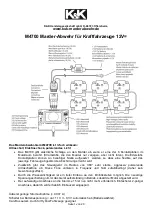
86
Taking Photographs—Beyond Point-and-Shoot
Choosing an Exposure Compensation Value
As a rule of thumb, select
positive
values when large areas of the frame are
very bright (for example, when photographing an expanse of sunlit water, sand,
or snow) or when the background is much brighter than the main subject. Use
negative
values when large areas of the frame are very dark (for example, when
photographing a forest of dark green leaves) or when the background is much
darker than the main subject. This is because the camera, in order to avoid
extreme over- or under-exposure, tends to lower exposure when the frame is
very bright and raise exposure when the frame is very dark, which can make
naturally bright subjects look dim and naturally dark subjects appear over-bright,
or “washed out.”
The easiest way to choose an exposure compensation value is to examine the
view through the lens in the monitor. If image appears too dark, raise expo-
sure compensation. If it is too bright, lower compensation. Continue to ad-
just exposure until the desired result has been achieved.
Содержание Coolpix 5000
Страница 14: ...xiv ...
Страница 146: ...132 ...
















































